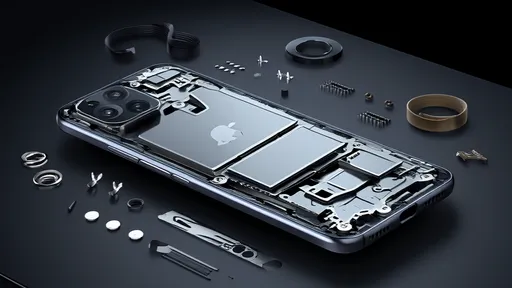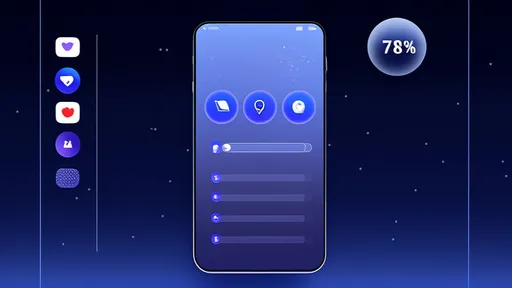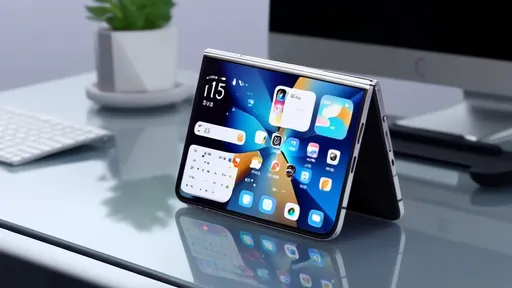The rise of foldable devices has ushered in a new era of mobile design, pushing the boundaries of what smartphones and tablets can achieve. Among the most critical advancements in this space is the development of dynamic layouts, which enable apps to seamlessly adapt to varying screen sizes and orientations. As manufacturers continue to refine foldable technology, software adaptability has become a key differentiator in delivering a smooth user experience.
Foldable phones, such as Samsung's Galaxy Z series and Huawei's Mate X lineup, present unique challenges for app developers. Unlike traditional smartphones with fixed screen dimensions, foldables can transition between compact phone-like displays and expansive tablet-like screens. This shift demands a fluid approach to UI design—one that goes beyond simple scaling or stretching of elements. Dynamic layouts must intelligently rearrange content, prioritize key information, and maintain usability across all form factors.
Google has been at the forefront of this evolution with its Android Foldables Support, introducing APIs and guidelines to help developers optimize their apps. The company emphasizes the importance of continuity—ensuring that apps not only resize but also preserve their state during folding and unfolding. For instance, a video playback app should smoothly transition from full-screen mode on an unfolded display to a smaller window when folded, without interrupting playback or losing user progress.
One of the most compelling use cases for dynamic layouts is productivity apps. Microsoft's adaptation of Office suite for foldables demonstrates how content can intelligently reflow between single-screen and dual-pane views. When unfolded, Word might display a document alongside formatting tools, while folding the device could shift to a focused reading mode. Similarly, email clients can show message lists and previews side by side on larger screens, then stack them vertically when folded.
The gaming industry has also begun embracing foldable dynamics. Titles optimized for these devices can utilize the expanded screen real estate for immersive gameplay, then automatically adjust HUD elements and control schemes when the device folds. Some developers are even experimenting with gameplay mechanics that incorporate the physical act of folding into the gaming experience itself—a concept that could redefine mobile gaming interactions.
Despite these advancements, challenges remain in creating truly universal dynamic layouts. Developers must account for numerous variables: different folding mechanisms (inward, outward, rollable), varying hinge positions, and diverse aspect ratios across manufacturers. There's also the question of handling intermediate states—when a device is partially folded at different angles. Current solutions often rely on breakpoint systems similar to responsive web design, but tailored specifically for foldable behaviors.
Looking ahead, the evolution of dynamic layouts will likely incorporate more AI-driven adaptations. Machine learning algorithms could analyze usage patterns to predict optimal layout configurations for different tasks. We might see interfaces that not only respond to screen changes but anticipate them, preparing alternative layouts before the user even initiates the fold. This proactive approach could significantly reduce the brief but noticeable lag that sometimes occurs during transitions.
The impact of dynamic layouts extends beyond foldables, influencing broader UI design philosophies. The principles developed for these devices—flexibility, continuity, and context-awareness—are becoming increasingly relevant for all multi-screen experiences, including desktop-to-mobile transitions and multi-window environments. As such, the innovations in foldable UI today may well define the standards for adaptable interfaces across all platforms tomorrow.
Consumer adoption will ultimately drive how quickly dynamic layouts become mainstream. As foldable devices decrease in price and increase in durability, more users will expect apps to provide seamless folding experiences. Developers who master these techniques early will gain a competitive edge, while those who lag behind may find their apps appearing outdated or cumbersome on these innovative devices.
The journey toward perfecting dynamic layouts is ongoing, with each generation of foldable devices presenting new opportunities and challenges. What remains clear is that the ability to create fluid, adaptable interfaces is no longer optional for mobile developers—it's becoming a fundamental skill in the age of flexible displays. The companies that invest in these capabilities today will be best positioned to shape the future of mobile interaction.

By /Aug 15, 2025

By /Aug 15, 2025

By /Aug 15, 2025

By /Aug 15, 2025

By /Aug 15, 2025

By /Aug 15, 2025

By /Aug 15, 2025

By /Aug 15, 2025

By /Aug 15, 2025

By /Aug 15, 2025

By /Aug 15, 2025

By /Aug 15, 2025

By /Aug 15, 2025

By /Aug 15, 2025

By /Aug 15, 2025

By /Aug 15, 2025

By /Aug 15, 2025

By /Aug 15, 2025

By /Aug 15, 2025

By /Aug 15, 2025